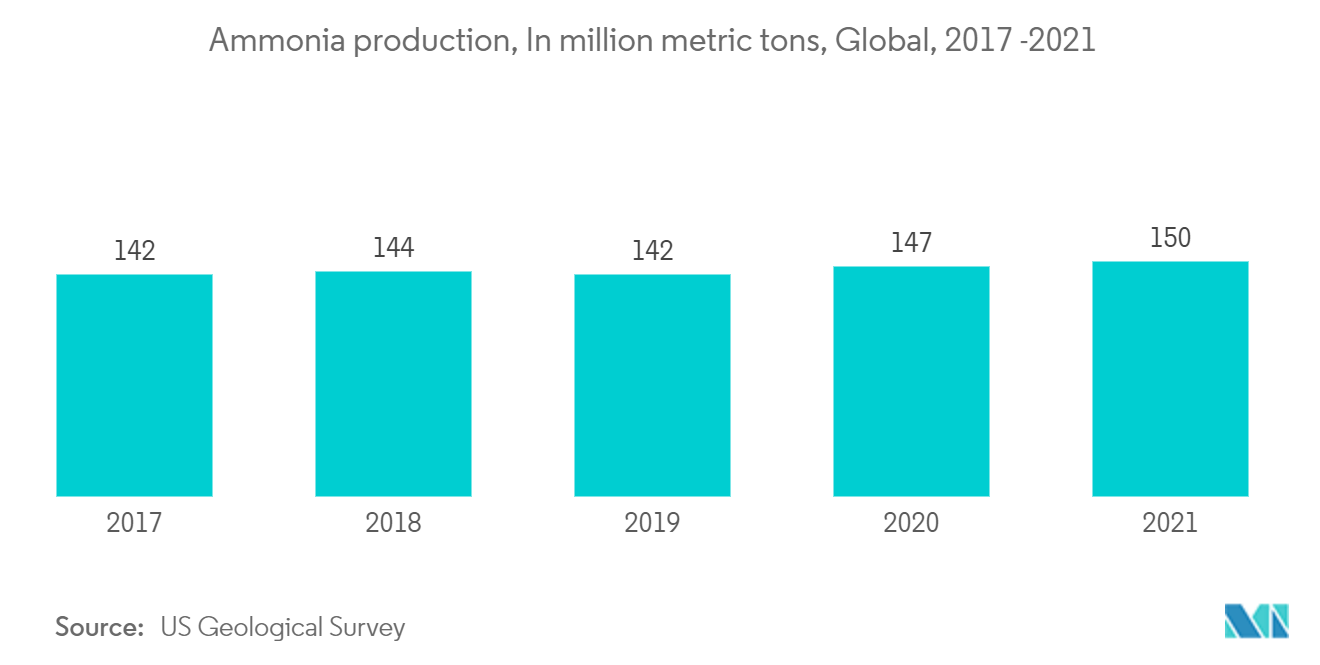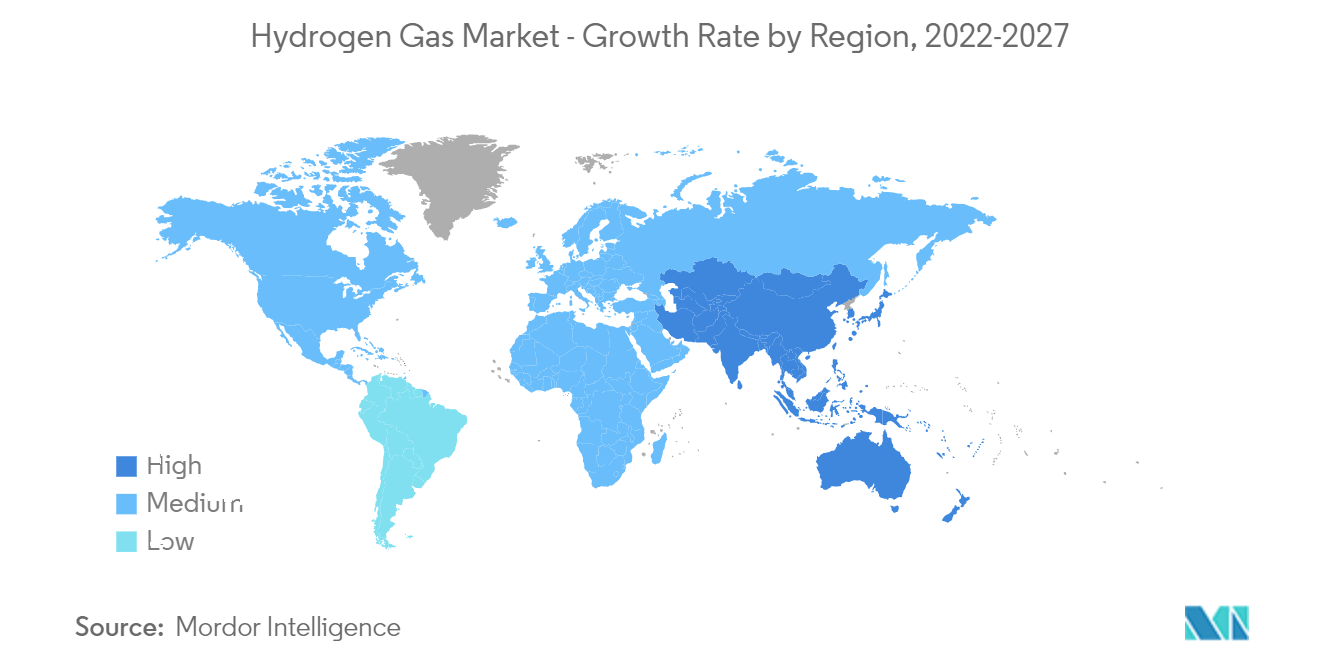Market Trends of Hydrogen Gas Industry
This section covers the major market trends shaping the Hydrogen Gas Market according to our research experts:
Ammonia Production to Dominate the Market Demand
- Ammonia is one of the leading chemicals produced across the world. The industrial production of ammonia uses the Haber-Bosch process, also referred to as abiotic or artificial, or industrial nitrogen fixation.
- The Haber-Bosch process, developed by Fritz Haber and Carl Bosch in the early 1900s, is the most conventionally used industrial process for producing ammonia in assimilation with hydrogen. The process involves a chemical reaction between atmospheric nitrogen and hydrogen in the presence of a metal-based catalyst, such as Uranium, Osmium, etc., at high temperature and pressure.
- Hydrogen used in the Haber-Bosch process is typically derived from fossil fuel feedstocks. The most prevalent technique for sourcing hydrogen is the reaction of natural gas feedstocks with steam in a steam reforming unit for deriving hydrogen. Hydrogen is also produced from cracking crude oil fractions or subjecting coal to partial oxidation processes.
- Due to hydrogen gas's storage and transportation complexities, ammonia and fertilizer production plants usually comprise integrated hydrogen generation units (HGUs) (i.e., reformers) fed with fossil fuels, such as natural gas and others.
- In 2021, global ammonia production amounted to around 150 million metric tons, registering an increase of about 2% compared to the previous year.
- East Asia had the highest ammonia production in 2021, with approximately 64.6 million metric tons. China is the top ammonia producer globally, producing around 39 million metric tons in 2021.
- According to the U.S. geological survey, the United States is one of the largest ammonia producers, producing 14 million metric tons at 35 facilities belonging to 16 companies.
- The agriculture industry, with an estimated share of 80% in the ammonia market, is the primary driver of the rising ammonia consumption in fertilizers. Southeast Asia is the major fertilizer consumer in Asia-Pacific, with China representing a 42.5% share in the Asia-Pacific fertilizer market in 2021. The demand for nitrogenous fertilizers in Asia is recorded as vital, creating a huge demand potential for hydrogen gas in industrial nitrogen fixation applications.
- In July 2022, the Brazilian company Unigel began constructing the world's most significant integrated green hydrogen and ammonia plant in the Camaçari Industrial Complex. The plant will have an initial production capacity of 10,000 tons per year of green hydrogen and 60,000 tons per year of green ammonia. Costing around USD 120 million, the project will come on stream by the end of 2023.
- Therefore, the above factors are expected to impact the market in the coming years significantly.

Asia-Pacific Region to Dominate the Market
- Asia-Pacific accounts for an enormous demand for hydrogen gas. It is estimated to be the fastest-growing region and to remain at the dominant position in global hydrogen gas, accounting for more than 45% of the total demand for hydrogen gas.
- In the Asia-Pacific region, China and India are among the largest countries in the world with the highest demand, with China dominating the global market for hydrogen gas owing to various projects in the countries.
- In March 2022, the Chinese government released the country's first-ever long-term plan for hydrogen, covering the period of 2021-2035. The program is focused on a phased approach to developing a domestic hydrogen industry and mastering technologies and manufacturing capabilities.
- Hydrogen Energy Equipment Industrial Cluster Project in Handan Economic and Technological Development Zone is expected to generate hydrogen using onshore wind and electrolysis process. The project is expected to come online in 2026, and the hydrogen produced will be used in the mobility and domestic heating industries.
- Zhangjiakou Yangyuan Jingxi New Energy Base Project will generate hydrogen using various renewable sources and electrolysis processes. The project is expected to come online in 2024.
- In February 2022, the government of India announced a new green hydrogen policy. The policy aims to help the government meet its climate targets and make India a green hydrogen hub by reaching the production target of 5 million tons of green hydrogen by 2030.
- According to the Ministry of New and Renewable Energy, India will spend USD 200 million over the next five to seven years to promote the use of low-carbon hydrogen. Moreover, the government asked its state-run oil and gas companies to set up seven hydrogen pilot plants in the next few years.
- Furthermore, ammonia production and demand in China and India stand at the top globally, ultimately driving the hydrogen gas market in these countries.
- All the factors mentioned above are likely to see growth in the Hydrogen market in the region over the forecasted period.


